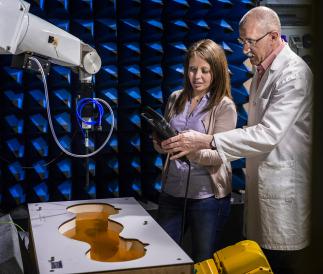Smart Working
The transition to the new ways of working is driven by the digital transformation, which is marked by a reduction in transaction costs and an increase in flexibility, because supply and demand for digital work meet on “platforms” at prices that compete on the service (and, therefore, outside the logic of salary negotiation).
This trend will also involve more “traditional” working methods, which will be increasingly focused on flexibility and individual autonomy in exchange for greater responsibility accepted regarding results (which will replace the mere fulfilment of tasks). Smart working offers precisely these characteristics of flexibility, autonomy and accountability and this is probably why it is attracting growing interest and heading outside the domain of corporate welfare instruments. In other words, the introduction of smart working can be a factor that facilitates the digital transformation. In this context, TIM is implementing smart working in ways set to include as many professional figures as possible, because it intends to create the conditions that facilitate the transition to the digital organisation so as to ensure that it takes place starting from its history and characteristics and not neglecting them or, even worse, regardless of them. In actual fact, if the transition to digital requires digital competences, people are the real hub of this change.
This is why in TIM, the approach taken towards the digital organisation envisages giving voice and listening to the transformation of people working them, having the intranet evolve into a real collaborative platform of work, facilitating, thanks to smart working, the identification of new organisational paradigms and new management and welfare models, to be kept constantly in line with strategies and operations.
Smart Working in TIM is, therefore, not so much a tactical choice designed to make the most of savings on the cost of labour (which, albeit slowly, are becoming concrete aspects of the Italian legal order), nor even merely a welfare choice in a bid to conciliate the life-work balance; rather, it is also a lever by which to recover individual and process productivity. In these terms, it is a “perpetual beta” change management route that increases productivity whilst increasing welfare and accountability for results.
As regards the implementation phases, the choice was made to proceed first (September 2015) with a survey on working methods (involving more than 30% of TIM people) and thereafter (October and December 2015), two stress tests were carried out to measure the work-life balance and productivity when working from home or from a company office that differs from your own; finally, in March 2016, a pilot project was launched that allowed for working outside the office, structured with work hours designed to improve the work-life balance.
This approach enables the generation, collection and analysis of adaptive reactions of the corporate organisation and therefore define a smart working policy that is not only functional to welfare and productivity but above all supports the digital transformation of corporate processes.
This clear aim of digital transformation, moreover, allows TIM to make its choices regarding technological equipment in such a way as to innovate the machines and services used, in accordance with criteria in accordance with criteria consistent with the transformation itself, ruling out anything that does not satisfy this requirement. This approach that is so closely focused on digital transformation also enables TIM to strike synergies with the supply of smart working services offered to its customers.

























